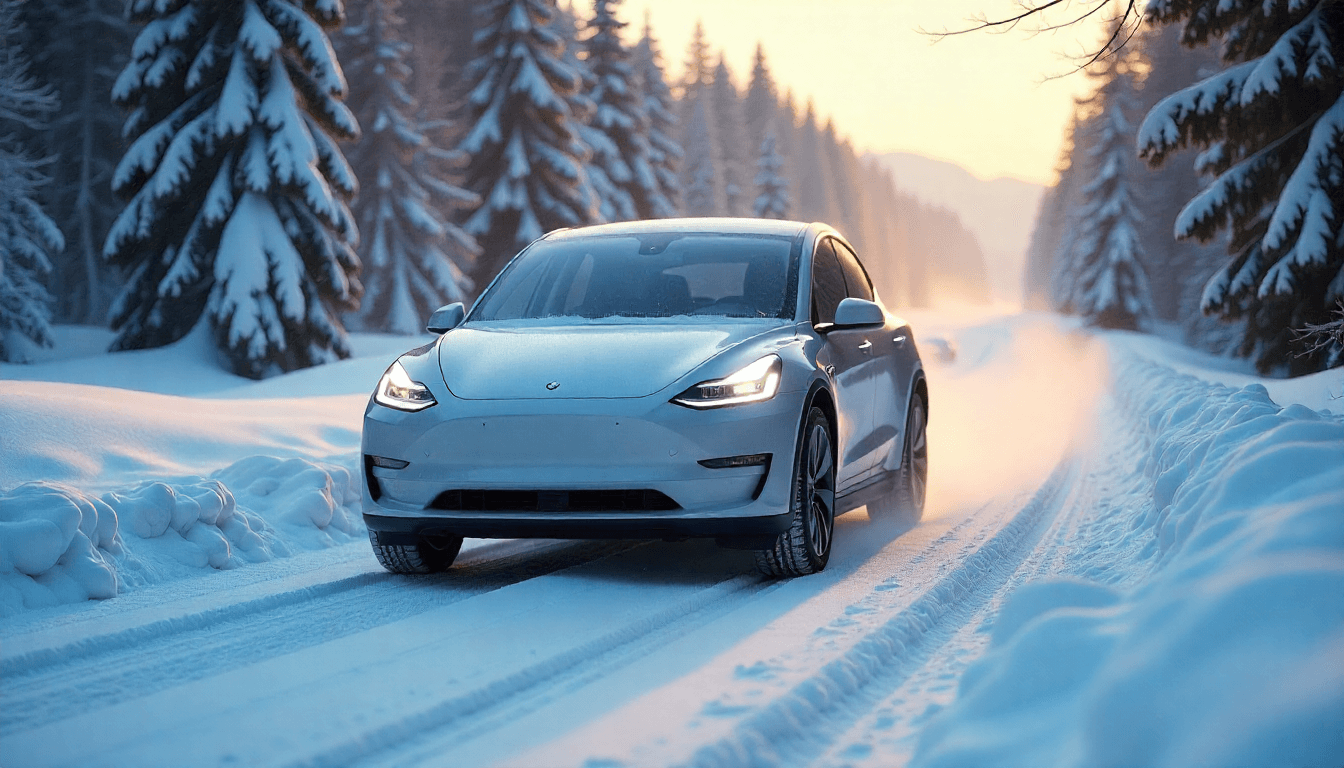Harsh Russian winters with their low temperatures, snowfalls and ice have traditionally caused apprehension among potential owners of electric vehicles (EVs). Indeed, many people wonder how well electric cars cope with such conditions. Accordingly, эксплуатация электромобиля в холодном климате in the Russian climate require a detailed study. It is important to understand how the cold affects the main systems of the vehicle. In addition, it is necessary to know about technologies designed to minimise the negative impact of frost. In this article, we will consider in detail all aspects of EM operation in winter. We will also give practical advice to ensure driving comfort and safety.
Impact of low temperatures on key electric vehicle systems
The cold affects several major components of an electric vehicle, which undoubtedly affects its behaviour. First and foremost, it affects the operation of the battery and heating systems.
Declining power reserve: the main challenge of winter
Perhaps the most noticeable change in winter is the reduction in power reserve. This parameter is one of the key parameters. In fact, the reduction can range from 20% to 50% from the stated summer figure. There are several factors at play here:
- The physics of the battery. Lithium-ion batteries are known to be less efficient at low temperatures. The chemical reactions inside are slowed down. This leads to a reduction in the energy output.
- Cabin heating. A significant amount of energy is required to maintain a comfortable interior temperature. Unlike internal combustion engine cars, where heat is a by-product of the engine, electric cars have to generate it from battery power. This, of course, is a serious drain on the charge.
- Battery warming. For optimum performance and to be able to charge quickly, the battery must be warmed up to a certain temperature. This process also consumes energy.
- Reduced recovery efficiency. The regenerative braking system, which normally converts kinetic energy into electricity, works less efficiently in cold weather. The battery cannot accept a charge with maximum capacity. This therefore reduces the overall efficiency.
Peculiarities of charging electric cars in freezing weather
Charging an electric car in winter also has its own nuances. First of all, the process takes longer. This is because part of the energy is first spent on heating the battery itself to the optimum temperature. Only after that does the full-fledged replenishment of the charge begin.
Low temperatures also slow down the electrochemical processes inside the battery. This reduces its ability to accept a charge with maximum capacity. Even at powerful charging stations, charging rates may be slower than in warm weather. Thus, owners should consider this factor when planning routes and charging times. For example, pre-warming the battery before connecting it to the station may partially solve this problem.
Traction and stability on slippery roads
Many owners note the good traction of electric cars in winter. This is due to several reasons. First of all, electric motors provide instant and very precise torque. In addition, electric cars generally have a low centre of gravity due to the location of the battery in the floor. This improves stability.
However, of course, no technology can replace quality winter tyres. They remain a key element of safety on snow and ice. The traction and stabilisation control systems (ESP/ESC) in electric cars are very finely tuned. They effectively help to cope with slips and skids.
Technologies and solutions for winter operation
Modern electric vehicles are equipped with a range of systems designed to improve their эксплуатацию электромобиля в холодном климате. These technologies greatly improve comfort and efficiency in the cold.
Battery temperature control systems
Almost every modern electric vehicle is equipped with a battery thermoregulation system. It includes heating and cooling of the battery.
- Preconditioning (Preconditioning). This function allows you to preheat the battery to the optimum temperature before travelling or charging. The heating can be activated remotely, via the mobile app. This undoubtedly improves efficiency.
- Active management. The system independently maintains the correct battery temperature during driving and charging. It provides optimum conditions for the chemical cells to work.
Interior heating technologies
Cabin heating is one of the main consumers of energy in winter. Car manufacturers use different approaches to its implementation:
- PTC heaters (posistor heaters). These are essentially conventional electric heating elements. They warm the air quickly, but consume a significant amount of energy. Most electric cars use them.
- Heat pumps. It is a more advanced and energy efficient technology. The heat pump works on the principle of a reverse refrigerator. It transfers heat from the environment (or from other vehicle components such as the electric motor) to the passenger compartment. Such systems significantly save battery power. They can be effective even at temperatures as low as -20°C. Some sources claim that a heat pump can reduce energy consumption for heating by 30-50%.
- Infrared heaters. Some models use infrared elements that heat the occupants in a targeted manner rather than the entire volume of air. This reduces energy consumption.
- Heated seats and steering wheel. These heating elements are certainly very effective. They warm the driver and passengers quickly. The energy consumption is considerably lower than that of a general heating system. Their use reduces the overall load on the battery.
Советы по эксплуатации электромобиля зимой
In order to эксплуатация электромобиля в холодном климате Without becoming a cause of frustration, owners should follow a few practical tips.
1. Pre-warming the vehicle
Always use the interior and battery preheat function. Do this when the vehicle is connected to a charger. In this way, the energy for heating will not be taken from the battery, but directly from the mains. This will certainly save precious charge for the journey.
2. Charging in the heat
Try to charge your electric vehicle in a warm room, e.g. a garage. If this is not possible, connect it to the charging station as soon as you arrive. The battery is still warm at this time. It will certainly accept the charge better.
3. Installation of quality winter tyres
This is axiomatic for any car, but especially so for an electric vehicle with its instant torque. Good winter tyres greatly improve traction and safety on slippery roads. Choose tyres recommended by the manufacturer.
4. Smooth driving
Abrupt starts and braking increase energy consumption. Moreover, they can cause skidding on slippery roads. Smooth and predictable driving certainly saves energy. It also increases safety.
5. Use of seat and steering wheel heating
It is preferable to use seat and steering wheel heating rather than running a powerful heater all the time. These elements use less energy. At the same time, they warm the body effectively.
6. Monitoring the charge level
Always maintain a higher battery charge level in winter. Do not discharge the battery to a minimum. This will give you a reserve of energy for unexpected situations. For example, this could be a traffic jam or the need for additional heating.
7. Insulation (for some models)
For some electric vehicle models, especially those without a heat pump, additional insulation is relevant. It helps to preserve heat in the interior and the battery. This can be a special "cover" for the battery or insulation of the engine compartment.
Conclusion
Эксплуатация электромобиля в холодном климатеin the Russian climate, although they have their own peculiarities, are not an insurmountable obstacle to their comfortable and safe operation. Modern technologies such as battery thermoregulation systems and heat pumps significantly improve their behaviour in frosty weather. Moreover, following simple operating rules such as pre-warming, proper charging and fitting quality winter tyres can minimise all risks. Every year electric cars are becoming more and more adapted to harsh conditions. Thus, they are becoming a full-fledged alternative to cars with internal combustion engines even in the coldest regions.

 Особенности эксплуатации электромобиля в холодном климате: вызовы и решения">
Особенности эксплуатации электромобиля в холодном климате: вызовы и решения">
